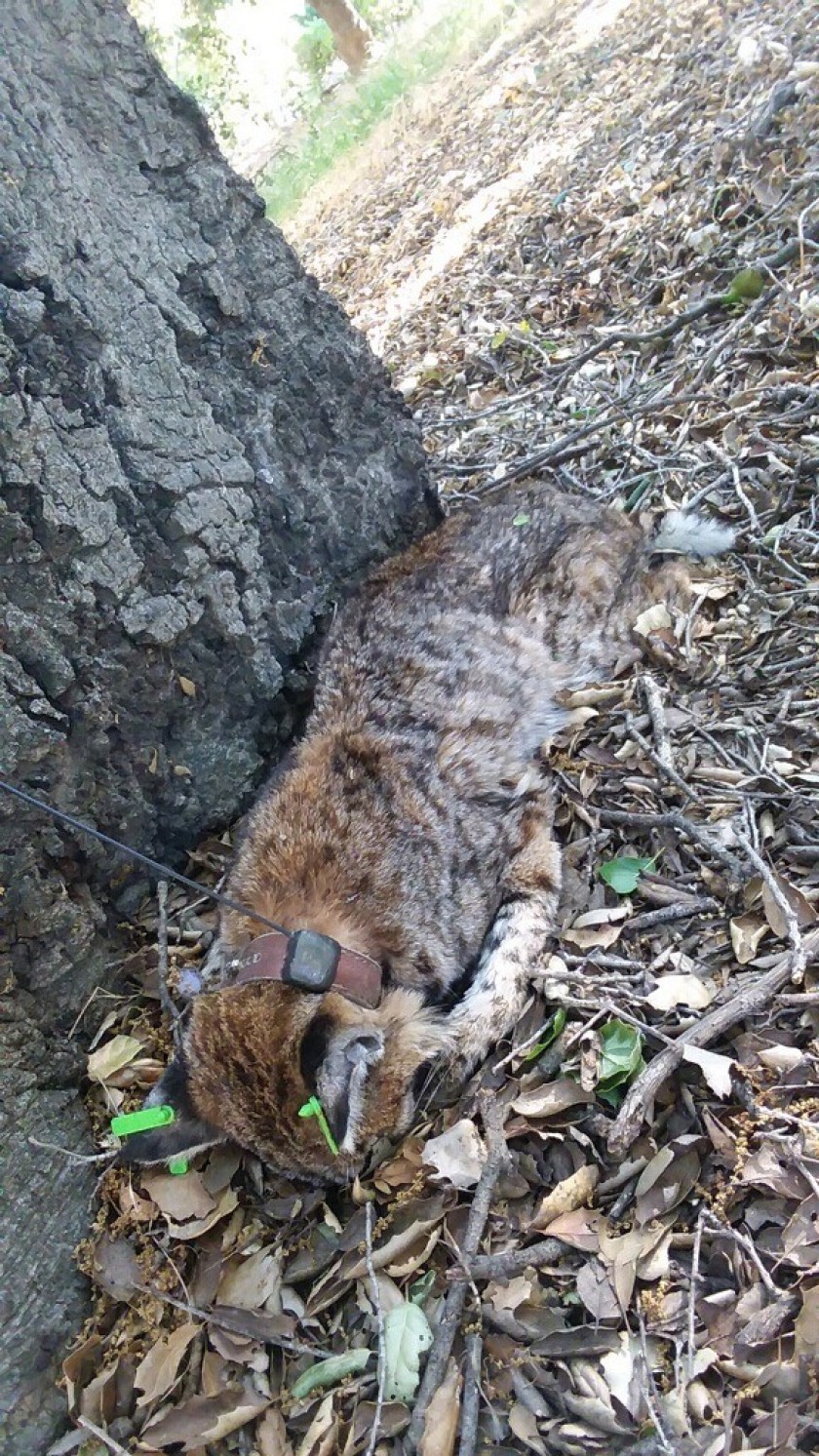
In April of last year, National Park Service biologists in the Santa Monica (CA) Mountains tracked a mountain lion’s GPS collar after it sent out “a mortality signal.” They found the mountain lion, dubbed P-47, dead. P-47 weighed 150 pounds, the largest and most robust of any in the region. He was only three years old. What killed him? “[P]oisoning from anticoagulant rodenticide, commonly known as rat poison. Testing on a sample of his liver showed that he had been exposed to not just one, but SIX different anticoagulant compounds! Internal hemorrhaging was also found in his head and lungs.” He bled to death internally.
We learned nothing and we did nothing. There have been three deaths of mountain lions in the last two years. And now, a bobcat has joined them. B-372] “was extremely emaciated and showed signs of chronic anemia, officials said, meaning she may have been exposed to rat poisons repeatedly.” She ingested it in a residential area as they are often used by residents to control rodents. “Her body was found June 20 under an oak tree in an Agoura Hills neighborhood:”
I, too, have found suffering animals as a result of rodenticides used by neighbors, as I documented earlier this summer after coming upon two pocket gophers over two weeks, on their side, eyes closed, arms and legs in the air, gasping for breath. Both died.
Not only do rodenticides kill animals, but they do so in one of the cruelest and most prolonged ways possible, causing anywhere from four to seven days of suffering before rodents like rats and squirrels finally succumb to the massive internal bleeding these poisons facilitate. This long sickness period often includes abnormal breathing, diarrhea, shivering and trembling, external bleeding and spasms; suffering and death that is perpetuated when their dead bodies are ingested by subsequent animals, such as owls and raptors. And P-47. And B-372. In fact, “Biologists have documented the presence of anticoagulant rodenticide compounds in 21 out of 22 local mountain lions that have been tested, including in a three-month-old kitten.”
Thankfully, legislation to ban these rodenticides is working its way through the California legislature. AB 1788 would ban them in a bid to protect “non target wildlife.” Because the bill’s proponents subscribe to a nativist philosophy, however, they do not care about the target wildlife if they are deemed “non-native.” As such, the bill provides exceptions, including allowing their use to control “non-native” wildlife by land managers in some circumstances. Ideally, AB 1788 would ban anticoagulants outright.
Land managers should not be in the business of targeting any healthy animals, trees, and plants for elimination, especially by pesticides. Tragically, these stewards of public lands are now in bed with the very chemical industries, like Dow and Monsanto, that are poisoning that land (and the animals living there). This Faustian bargain is driven by those who (falsely) wear the mantle of “environmentalism,” since the movement was hijacked by the pseudoscience of “Invasion Biology,” which has launched a never-ending war on nature. Its armaments in that war include the very things the environmental movement was founded to combat and protect animals and plants against: chainsaws, traps, guns, and pesticides.
To adherents of invasion biology, squirrels and rats (and, as we saw recently in Australia, cats and others) are targeted with poisons because they are deemed “non-native” and “invasive,” terms that inspire unwarranted fear, knee-jerk suspicion, and a lack of thoughtfulness and moral consideration. They are language of intolerance, based on an idea most of us have rejected in our treatment of our fellow human beings — that the value of a living being can be reduced merely to its place of ancestral origin.
While NPS biologists expressed sadness for the death of P-47 and B-372 and sounded the alarm about rodenticides, the agency is guilty of similar conduct, killing, as it does, animals across the country with similar means.
Enough is enough. We need to reclaim the environmental movement away from nativists and reorient it back to its founding mission: protecting plants and animals from the very chainsaws, traps, guns, and pesticides they now use to harm them.
Although I intend to ask them to remove the exceptions or narrow them significantly, we can tackle evils one at a time. So despite the limitations, if you live in California, please contact your state assemblymember and state senator and urge them to vote Yes on AB 1788.
————-
Have a comment? Join the discussion by clicking here.